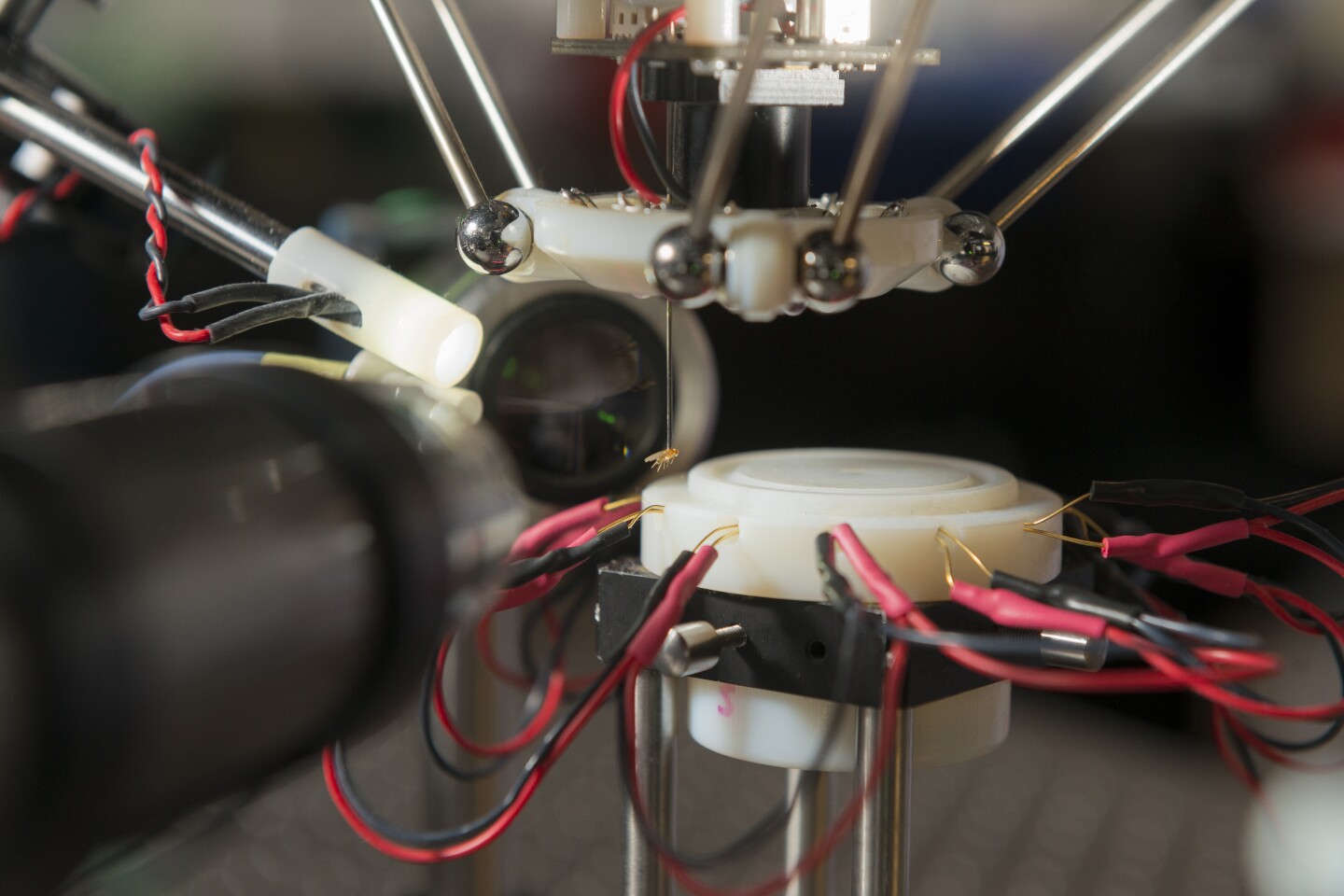Machine vision and robotic precision have combined in a new way to further fruit fly research. Scientists at Stanford's Bio-X program have developed a robot that can catch and sort the tiny creatures much faster than a human can, though to the flies themselves it must seem like an alien abduction.
The fruit fly (or Drosophila) is one of the most important model organisms used in biomedical research – it's easy to care for and has a well-understood genome that maps well to ours. It's also very small at around 2.5 mm in length, so traditionally the sorting, sexing, and identification of these tiny beasts requires many monotonous human hours and anesthesia. This isn't always a good mix, as I once discovered when my biology classmate inhaled a little too much ether while mouth-pipetting.
Using a beam of IR light invisible to the fly, the Stanford robot is able to identify individuals by the pattern reflected off the thorax. A small amount of suction is then applied to the thorax through tiny straw, safely lifting the fly and avoiding anesthesia.

Once restrained, the robot can identify the gender and physical characteristics of the fly and even prepare microdissections to analyze the brain.
Associate professor of biology Mark Schnitzer and his team were even able to perform behavioral studies with the robot, exposing the flies to different odors and seeing how they responded. Such experiments were previously impossible because humans simply can't distinguish individual flies, nor see specific behaviors.
In one experiment the robot was able to process 1000 flies in ten hours, unheard of for even an skilled scientist. The promise is not just that Drosophila scientists can spend more time doing, well, science, instead of moving flies, but that it also opens up new avenues of research.
The amazing fly-abducting robot was described last month in Nature Methods.
The video below demonstrates the quick (and painless) lift and release via robot.
Source: Stanford







